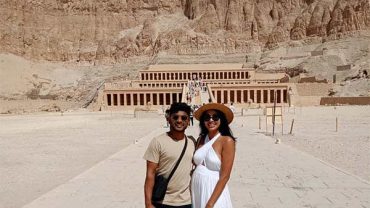The Temple of Osiris stands as a testament to ancient Egyptian civilization, an architectural marvel steeped in mystery and spiritual significance. Located on the west bank of the Nile River, this sacred structure is dedicated to Osiris, the god of the afterlife and resurrection. As we delve into the enigmatic history and profound symbolism surrounding the Temple of Osiris, we embark on a journey through the annals of time, where spirituality and culture converged to create an awe-inspiring sanctuary.
Historical Significance
Dating back to the 13th century BCE, the Temple of Osiris is a relic of the New Kingdom period, a time when pharaohs sought to immortalize their devotion to the gods through grandiose structures. Dedicated to Osiris, the god associated with life, death, and rebirth, the temple served as a place of worship and pilgrimage. Its construction was overseen by Seti I, with his son, Ramses II, completing the intricate carvings and reliefs that adorn the temple walls. These depictions, etched with precision, narrate the myths and legends surrounding Osiris, providing a vivid glimpse into the religious beliefs that shaped ancient Egyptian society.
Architectural Marvels
The architectural brilliance of the Temple of Osiris reflects the Egyptians’ advanced understanding of engineering and astronomy. The temple complex comprises a hypostyle hall, adorned with towering columns, and a sanctuary housing the divine statue of Osiris. The precision in the alignment of structures with celestial bodies showcases the ancient Egyptians’ reverence for cosmic forces and their meticulous planning in constructing sacred spaces. The intricate hieroglyphs and bas-reliefs that grace the temple walls not only narrate mythological tales but also serve as a visual encyclopedia of the religious beliefs and rituals of that era.
Spiritual Symbolism
At the heart of the Temple of Osiris lies a deep well of spiritual symbolism. Osiris, associated with resurrection and the afterlife, was central to ancient Egyptian funerary rites. Pilgrims would embark on journeys to this sacred site, seeking divine favor and a connection to the divine realm. The temple’s layout, adorned with symbolic imagery, conveyed the journey of the soul after death, a belief ingrained in the core of Egyptian spirituality. Every carving, every statue, whispers the secrets of a civilization that revered life’s cyclical nature and sought solace in the promise of an eternal afterlife.
Modern-Day Exploration
While the Temple of Osiris stands as a relic of antiquity, its mystique continues to captivate modern-day explorers and historians. The site’s preservation and ongoing archaeological efforts allow us to peel back the layers of time and gain insight into the religious and cultural tapestry of ancient Egypt. Visitors today stand in awe of the colossal statues, intricate carvings, and celestial alignments that whisper tales of a civilization that revered its gods with unwavering devotion. The Temple of Osiris, with its timeless allure, invites us to contemplate the interplay between the spiritual and the earthly, offering a window into a bygone era where gods and mortals communed in the shadows of colossal stone walls.
Guardians of the Temple
The guardians of the Temple of Osiris were the priests who dedicated their lives to the service of the gods. These revered individuals played a crucial role in maintaining the sanctity of the temple, conducting elaborate rituals, and interpreting the will of Osiris. The priesthood, an esteemed class in ancient Egyptian society, held the key to the spiritual well-being of the community. The temple, as a conduit between the mortal and divine realms, relied on these guardians to ensure a harmonious connection, fostering a sense of unity and purpose among the worshipers.
Religious Rituals and Festivals
The Temple of Osiris was not merely a static structure but a vibrant center of religious activity, pulsating with the rhythm of rituals and festivals. The priests orchestrated ceremonies to honor Osiris, involving intricate chants, processions, and symbolic offerings. Among the notable festivals was the Feast of Osiris, a jubilant celebration marking the god’s triumph over death. Pilgrims from far and wide gathered at the temple during these occasions, creating a tapestry of colors, sounds, and scents that infused the sacred space with divine energy. These religious observances reinforced the spiritual connection between the people and their god, fostering a collective consciousness that transcended the boundaries of everyday life.
Legacy of Osiris in Egyptian Culture
The legacy of Osiris extends beyond the confines of the temple walls, permeating every aspect of ancient Egyptian culture. The myth of Osiris, his death, and subsequent resurrection became a metaphor for the cyclical nature of life, death, and rebirth. This narrative influenced not only religious beliefs but also societal norms, emphasizing the importance of moral conduct and justice. The veneration of Osiris extended to the concept of ma’at, the Egyptian principle of cosmic order and balance, which guided individuals in leading virtuous lives. In essence, the Temple of Osiris served as more than a religious edifice; it was a cultural epicenter shaping the very fabric of Egyptian civilization.




Comment (0)